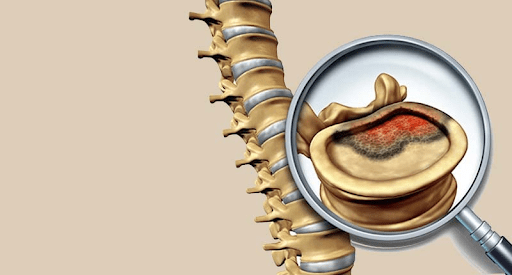Minimally Invasive Spine Tumor Surgery
Earlier, spinal tumors were challenging and sometimes impossible to operate upon without damaging the spinal nerves.
But with minimally invasive spine surgery (MISS), it is now possible to remove spinal tumors successfully. This revolutionary surgical modality has pioneered new procedures and devices that enable an
expert neurosurgeon to reach and remove previously inaccessible tumors.
The purpose of MISS is to efficiently eliminate tumors from the spinal cord while keeping the spine stable. Some of the advanced procedures are corpectomy, mini open decompression and percutaneous fixation.
Dr. Mohana Rao Patibandla, one of the leading neurosurgical oncologists in Guntur, is an expert in performing minimally invasive spine tumor surgery with exceptional precision and safety.
The spinal cord is one of the most delicate and intricate parts of the body and he is adept in removing spinal cord tumors without damaging the surrounding muscles, vertebrae, nerves, or ligaments.
You can undergo these advanced surgeries at Dr. Rao’s Hospital, a premier neurology hospital in Guntur, Andhra Pradesh.
Spinal cord tumors
Spinal cord tumors develop in the spinal cord itself or a region around the spinal cord.
The tumors that start in the spinal cord are referred to as primary spinal cord tumors, which are mostly benign.
The secondary tumors begin elsewhere and spread to the spinal cord. They account for the majority of spinal cord tumors and are malignant.
The classification of a spinal cord tumor is determined by the location of cancer, which can be the vertebrae, protective membrane, or spinal cord itself.
Image Source: https://epos.myesr.org/poster/esr/ecr2013/C-2112
Extradural tumor:
These tumors develop outside the spine in the membrane that protects the cord and the bones surrounding the spinal cord. The majority of the spinal tumors are extradural tumors.
Intradural tumor:
These tumors form within the spinal cord or the covering of the spinal cord called the dura.
Intramedullary tumors:
They grow within the spinal cord.
Whether benign or cancerous, spinal cord tumors must be diagnosed and treated as soon as possible before they press against the spinal cord, obstructing neurological function and causing spinal cord damage.
What are the symptoms of spinal cord tumors?
- Loss of sensation in the legs
- Numbness, cold sensation, and tingling in the legs
- Back pain that is not associated with physical activity, which usually gets worse while lying down
- Loss of control over bladder movement
- Muscle weakness in the legs leading to falls or difficulty in walking
If you or your loved ones are experiencing these symptoms, you should seek medical help. You can visit Dr. Mohana Rao, a well-known neurosurgeon in Guntur, Andhra Pradesh, for a consultation. He will provide accurate diagnosis and help devise a comprehensive treatment plan to remove the tumor effectively.
Minimally invasive spinal cord tumor removal surgery
Before minimally invasive spine surgery, removing a spinal tumor was a difficult treatment rarely performed as patients would experience
disability, pain, or scoliosis in years following the surgery. Instead, they were treated with radiation and chemotherapy.
Surgeons can now remove spinal tumors with far less intrusive approaches thanks to advances in technology. Patients endure less pain and trauma as a result of the smaller incision.
Dr. Mohana Rao, a proficient neurosurgical oncologist in Guntur, uses a minimally invasive method to thoroughly resect a lesion without damaging the spine by making small incisions and using specialized instruments and imaging techniques.
Nowadays, surgeons skilled in minimally invasive spine surgery usually use bone-saving methods to maintain spine integrity. These methods are a less intrusive option to more invasive operations, and they can help patients avoid having their bones fused with rods and screws. The majority of patients can go home the day after surgery without the requirement for a post-operative brace.
Procedure for minimally invasive spine surgery
- The surgeon makes small incisions through which segmental tubular retractors and dilators are inserted to retract muscles and enable access to the spine by creating a working channel for the surgery.
- This approach decreases the risk of muscular and soft tissue damage as well as blood loss during surgery. To make the surgery safer, the surgeon uses a camera or a microscope to magnify and display images of the operation field on a screen in the operating room.
- The surgeon inserts special surgical instruments via the working channel to perform the surgery. Surgical microscopes are occasionally used to magnify the visual field. Once the surgeon removes the surgical devices, the muscles and tissues regain their position.
Advantages of minimally invasive spine surgery
Minimally invasive spine surgery provides the least amount of trauma to the muscles and surrounding areas. It offers several benefits such as:
- Less bleeding
- Minimal scarring
- Reduced infection risks
- Faster healing
- Less post-surgical pain
- Shorter hospital stay
- Quicker recovery
- Quicker return to normal activities
Suppose the tumor is cancerous and needs further treatment such as chemotherapy and radiation; minimally invasive spine surgery offers shorter recovery period and quicker healing, so that you can begin your post-operative treatment sooner.
If you have queries regarding minimally invasive spine tumor surgery, in that case, you can call Dr. Rao’s Hospital, one of the best neurology hospitals in Guntur, Andhra Pradesh, to book an appointment with Dr. Mohana Rao Patibandla.

